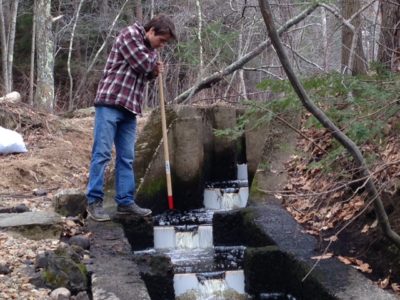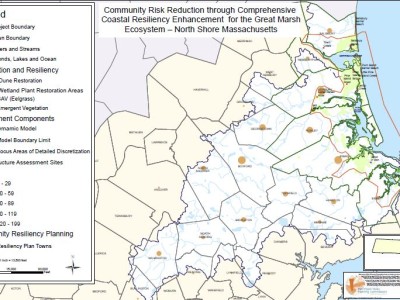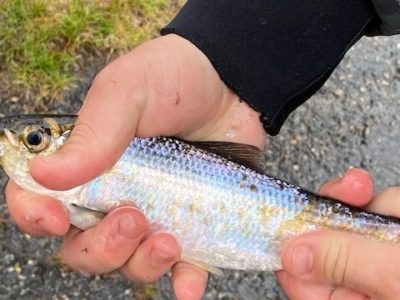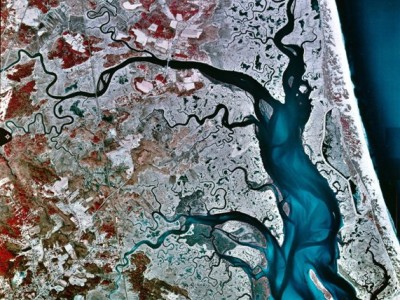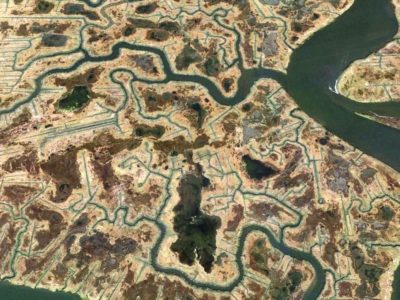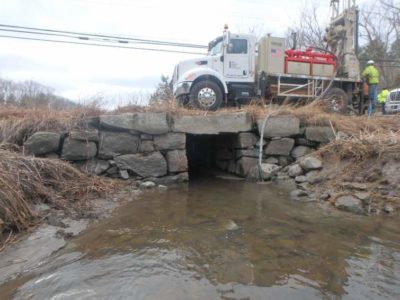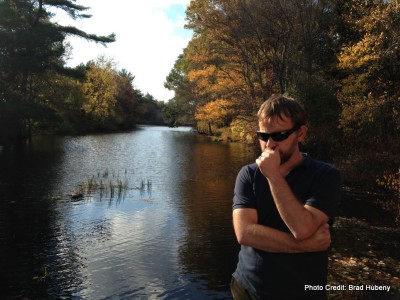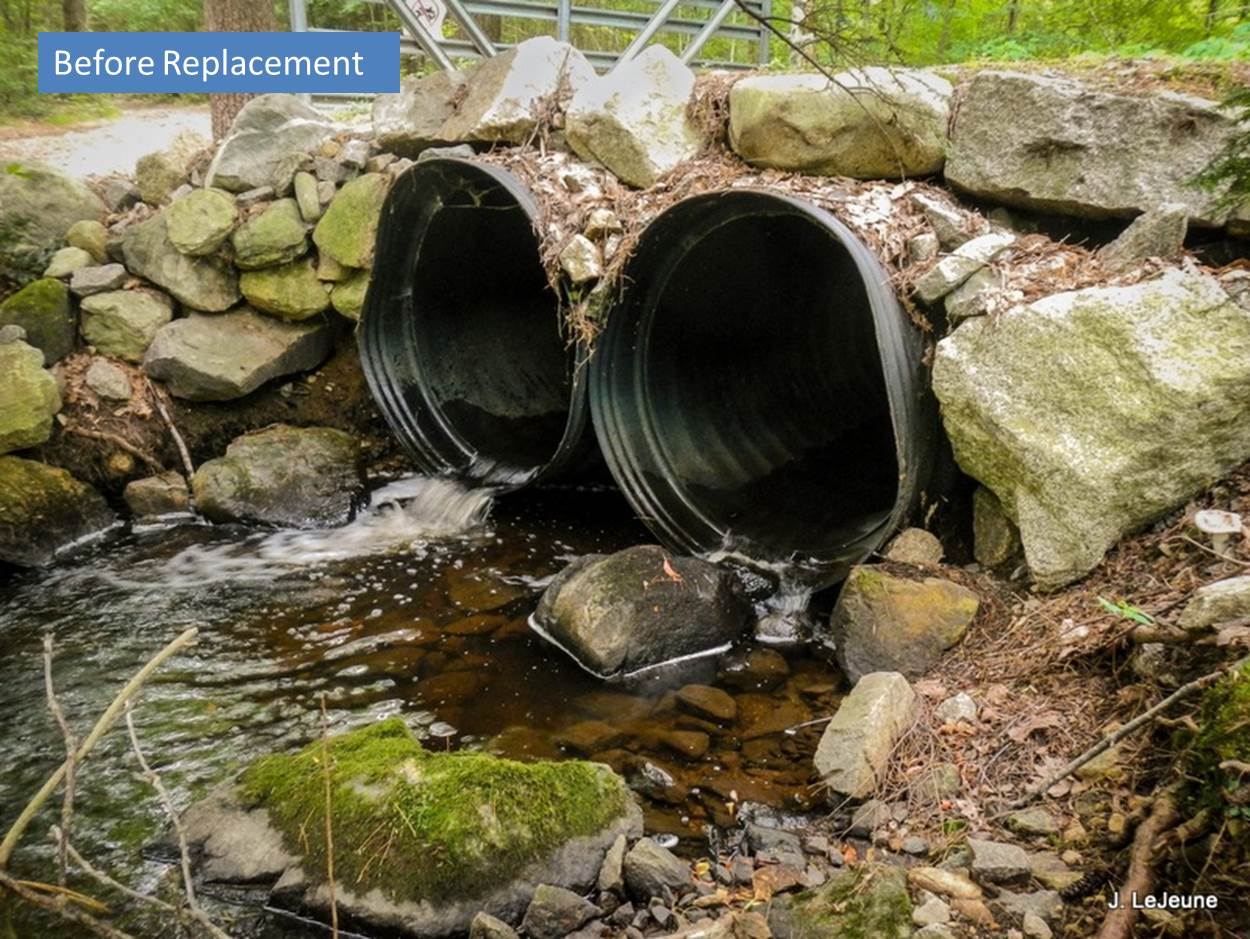
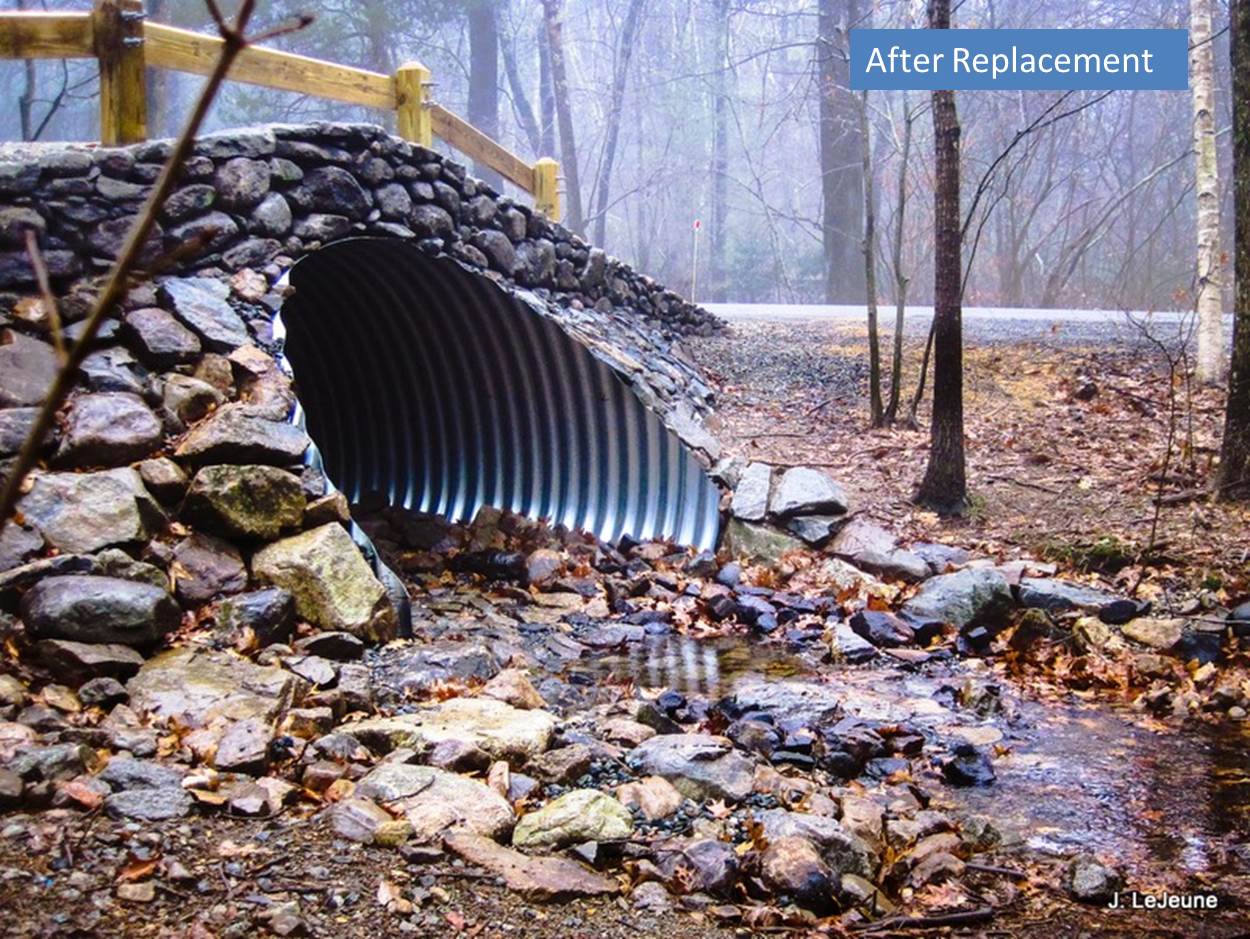
Before and after photos of the project site (hover over picture to see after photo) Before: The two undersized culverts had a drop at their outlet and contained no natural streambed material. The crossing was rated as a moderate barrier to stream life was at higher risk of failure in a flood. After: The new crossing provides a stream bed that should serve as a naturally functioning migration corridor for a variety of animals. The single, large diameter structure will allow the stream to pass water and debris downstream during floods rather than washing out the culvert.
Status
November 2013
Toolkit and Actions
Habitat Restoration
Project Team
- Town of Boxford
- Boxford Lakes, Ponds & Streams Committee
- Trout Unlimited Nor’East Chapter
- Trout Unlimited
- Town of Boxford DPW
- O’Neill Associates
- Ipswich River Watershed Association
Funding Support
- Trout Unlimited Embrace a Stream
- Town of Boxford
- Trout Unlimited Nor’East Chapter
About the Project
The removal and replacement of twin 36 inch culverts on Crooked Pond Brook in Boxford is part of a four-phase program to improve stream habitat and eventually restore this section of the Fish Brook/Crooked Pond Brook watershed to Cold Water Fishery status. These phases include improved fish passage on Longmeadow Brook (completed September 2011), streambed restoration at the headwaters of Crooked Pond Brook, and culvert replacement at Middleton Road.
In November 2013, two perched, undersized culverts were replaced with a single, bridge-like arched culvert designed to meet engineering standards for fish and floods alike. The stream bed that runs through the upgraded structure now resembles the stream bed above and below the culvert as it should. This will greatly improve migration paths for fish and wildlife along the stream. It will also allow for natural downstream movement of water, debris and sediment during higher flows decreasing the chance of culvert failure in a flood.
Prior surveys of the local watershed have confirmed the presence of a foundation macroinvertebrate community as well as cold water and anadromous fishes including brook trout, fallfish, river herring and American eel. Upstream access would provide increased spawning habitat and refuge from warm water. This project removed a significant blockage to wildlife and river processes and is an excellent demonstration of the way more and more of the region’s road-stream crossings.

